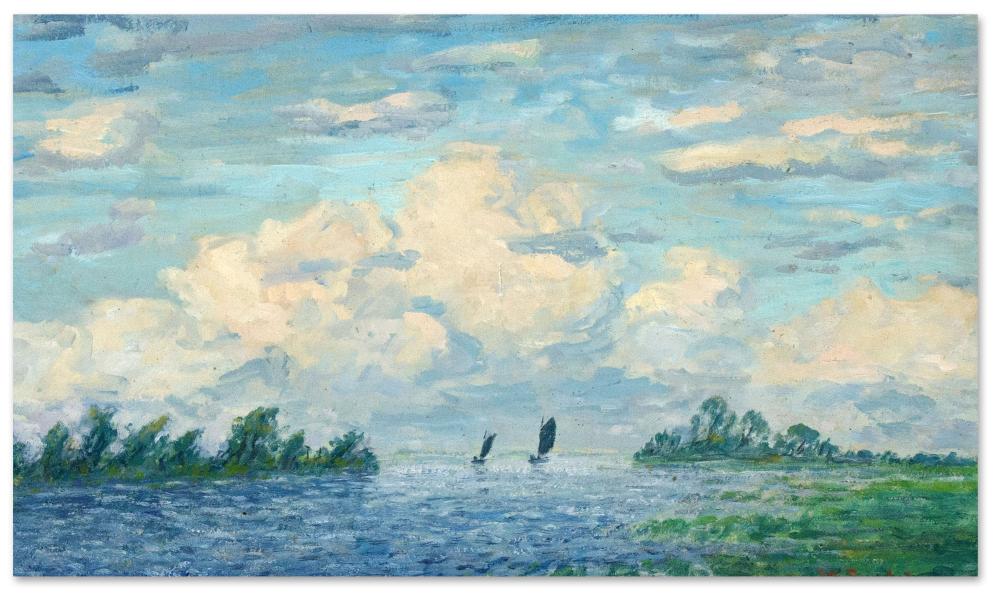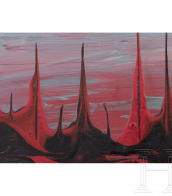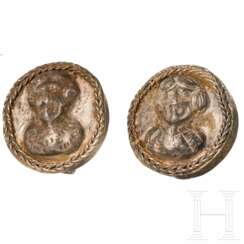härtel

Hans von Bartels was a German painter.
Bartels is associated with the Düsseldorf school of painting. Although an oil painter of great power, he is also one of the leading German water-colour painters, mainly of marines and scenes of fishing life, painted with rude vigour and a great display of technical skill. Bartels made a great contribution to the development of the watercolour. He was the first to use watercolour paint of large formats without the earlier conventions. From 1887 Von Bartels came every summer to the Dutch coast, especially to Katwijk aan Zee, to paint the fisherfolk and their labour. He excels in storm scenes and in depicting the strong, healthy fishing-folk of the northern coasts. He became an honorary member of leading English, German, Dutch, Belgian and Austrian art societies.


George Frideric Handel was a German-born English composer of the Baroque period.
After receiving a musical education, Handel worked briefly as an organist at the cathedral in Halle, then joined the violin section of the opera orchestra in Hamburg. After spending several years in Italy, he wrote many works there, including two operas. The style of Italian music permeated the composer's work throughout his life. Having become famous in Italy, in 1710 Handel was appointed Kapellmeister to the Elector of Hanover, the future King George I of England, and two years later he was already staging his operas in London.
In 1727 Handel became a British subject and was appointed composer to the Chapel Royal. In this capacity he wrote many musical works. From 1720 to 1728, operas at the Royal Theater in London were staged by the Royal Academy of Music, and Handel wrote the music for most of them.
In 1741, Handel wrote the most famous of his many oratorios, Messiah. Handel had a talent for musically portraying a human character in a single scene or aria - a gift he used with great dramatic power in his operas and oratorios. Although much of his music was vocal, Handel was also one of the recognized instrumental composers of the late Baroque era. Handel paid tribute to church music by composing many solemn hymns.
Handel's music has become an integral part of the national culture of England, and in Germany he is also honored as a major national composer.


Thomas Baumgärtel is a German artist who is also known under the pseudonym "Bananensprayer". His bananas, sprayed in pochoir technique and reminiscent of Andy Warhol's "Velvet Underground Banana", can be found at the entrances of some 4000 art museums and galleries in both German and international cities.


Thomas Baumgärtel is a German artist who is also known under the pseudonym "Bananensprayer". His bananas, sprayed in pochoir technique and reminiscent of Andy Warhol's "Velvet Underground Banana", can be found at the entrances of some 4000 art museums and galleries in both German and international cities.




Abraham Ortelius (Ortels) was a Brabantian cartographer, geographer, and cosmographer. He is recognized as the creator of the first modern atlas, the Theatrum Orbis Terrarum (Theatre of the World). Along with Gemma Frisius and Gerardus Mercator, Ortelius is generally considered one of the founders of the Netherlandish school of cartography and geography. He was a notable figure of this school in its golden age (approximately 1570s–1670s) and an important geographer of Spain during the age of discovery. The publication of his atlas in 1570 is often considered as the official beginning of the Golden Age of Netherlandish cartography. He was the first person proposing that the continents were joined before drifting to their present positions. Beginning as a map-engraver, in 1547 he entered the Antwerp Guild of Saint Luke as an illuminator of maps. In 1560 when travelling with Mercator to Trier, Lorraine, and Poitiers, he seems to have been attracted, largely by Mercator's influence, towards the career of a scientific geographer. In 1564 he published his first map, Typus Orbis Terrarum, an eight-leaved wall map of the world. On 20 May 1570, Gilles Coppens de Diest at Antwerp issued Ortelius's Theatrum Orbis Terrarum, the "first modern atlas" (of 53 maps).






Heinrich Hönich, also known as Jindřich Hönich, was a Czech-German academic artist, graphic designer and teacher.
Hönich studied at the Prague Academy of Fine Arts and the Academy of Fine Arts in Dresden, and lived in Munich from 1906-1928, where he participated in many exhibitions. The artist was mainly engaged in landscape painting and graphics, but also created ex-libris and posters, worked in etching and lithography, was a skillful draughtsman and graphic artist.
From 1928 to 1945 Hönich worked as a professor at the Prague Academy of Art and raised a number of famous artists.
In 1944, Heinrich Hönich was included in the Gottbegnadet list of German artists compiled by the Imperial German Ministry of Public Education and Propaganda under the direction of Joseph Goebbels.


















































































